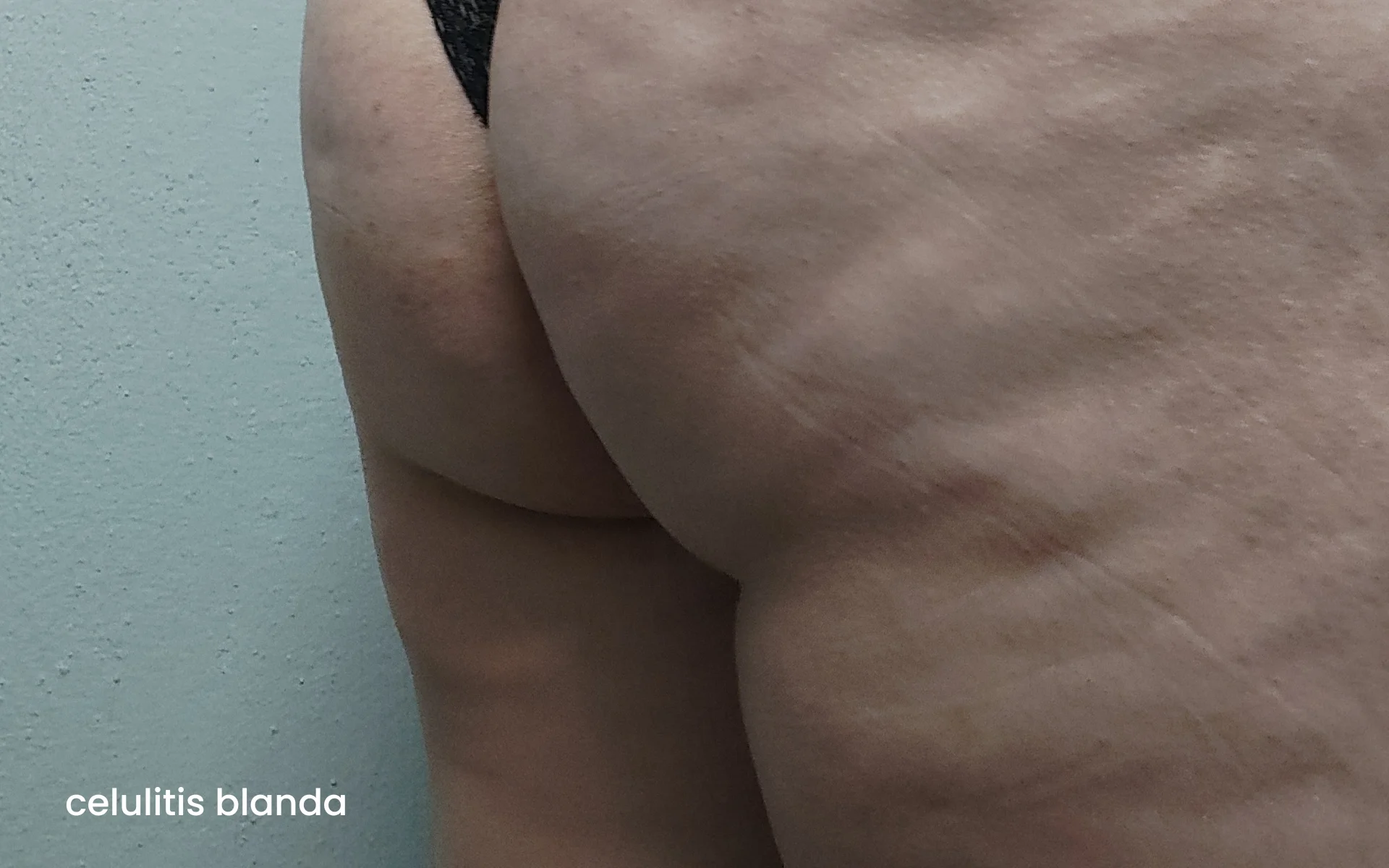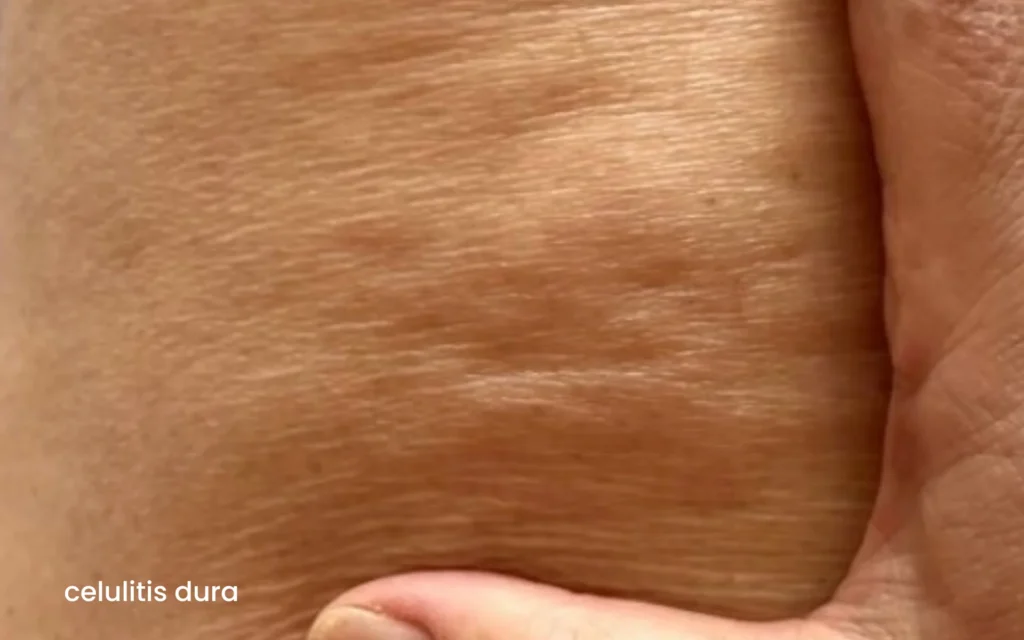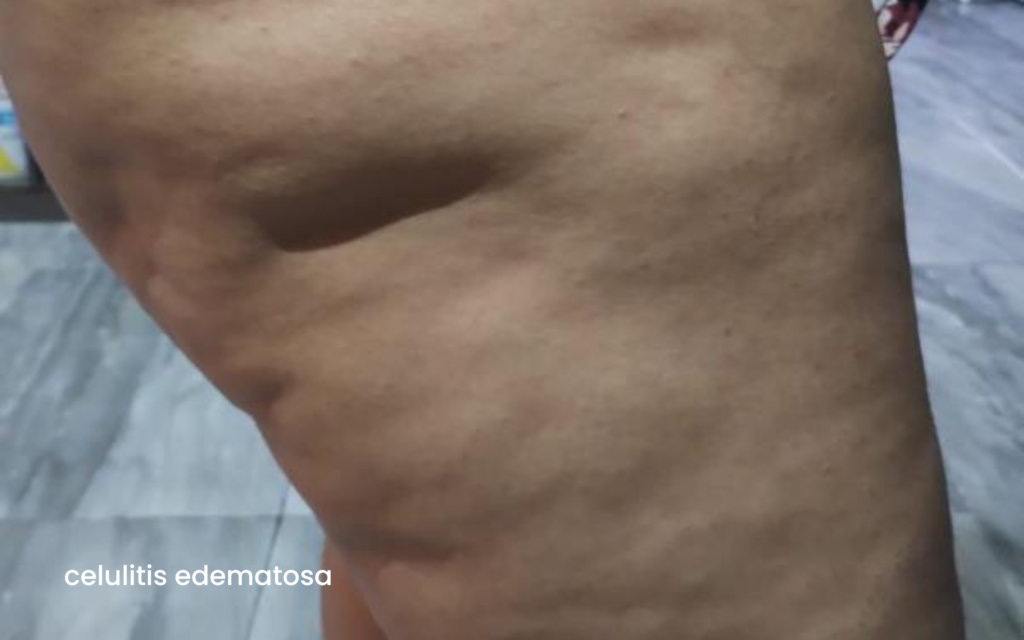Cellulite, or orange peel skin, forms when fat cells stop functioning properly. If they do not drain adequately, the cells become inflamed, enlarge, and harden. This prevents proper circulation of fluids, which accumulate and lead to the characteristic dimpled appearance.
Depending on how it appears on the skin, there are three types of cellulite:
Soft Cellulite:
This is the most common type, visible to the naked eye, with a gelatinous texture that moves when you walk. It typically appears after the age of 30 in sedentary individuals.

Hard Cellulite:
This type is firmer to the touch compared to the rest of the skin, noticeable when pinching the area, and may be accompanied by stretch marks. It usually appears in young women who engage in sports and is associated with hormonal imbalances.

Edematous Cellulite:
Less common but more difficult to treat, this type is visible and causes the skin to swell, often painful when touched. It primarily affects the lower extremities, deforming them and giving the legs a column-like appearance. It is mainly associated with excess weight and fluid retention, though hormonal factors and stress can also play a role in its appearance.

If your skin shows more than one type of cellulite, you have mixed cellulite.
Cellulite is preventable and treatable. In addition to maintaining a balanced diet, staying hydrated, and exercising, there are non-invasive, affordable treatments that can be done at home. Azala Natura’s kit features products made from natural ingredients that help eliminate adipose tissue, hydrate, oxygenate the skin, activate circulation, and increase elasticity (cel-u, scrub-u, shape-u, silicone ventosa, and natural bristle brush). Visit our online store.





























